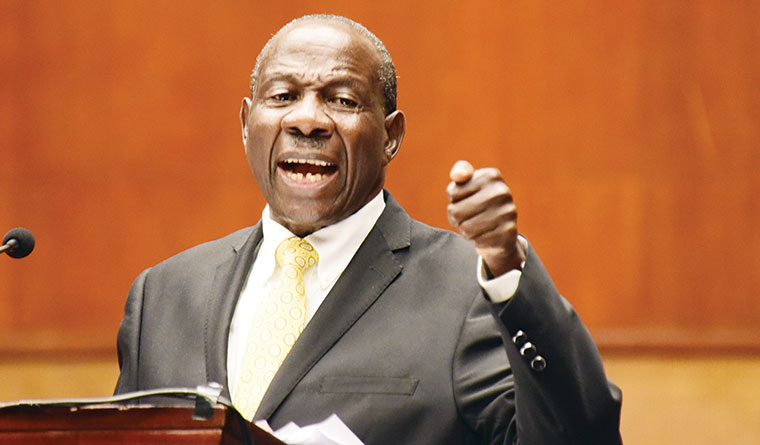MDAs Face UGX 2 Trillion Expenditure Cuts
3 min read
Government Ministries, Departments and Agencies-MDAs will have to do with a little less funding in the next financial year as the Finance Ministry slashes expenditure budgets across the board due to the shrinking revenues resulting from the COVID-19 pandemic.
The government of Uganda is adopting expenditure cuts and debt sustainability measures in light of limited fiscal space in the 2021/2022 financial year. This is contained in 2021/2022 financial year Budget Framework Paper. Government expenditure excluding domestic debt refinancing and external amortization is projected to decline to Shillings 35.06 trillion from Shillings 37.25 trillion in the current financial year.
This represents a Shillings 2.1 trillion reduction. The expenditure cuts have been effected despite a rise in the budget to Shillings 45.685 trillion from Shillings 45.493 trillion in the current financial year. The increased budget has instead seen an increase in external debt payments (amortization), which will increase from Shillings 1.228 trillion to Shillings 1.826 trillion, interest payments have also seen an increase from Shillings 4.049 trillion to Shillings 4.960 trillion.
According to the Budget Framework Paper, the reduction in expenditure is in line with the need to undertake fiscal consolidation to ensure fiscal and debt sustainability. Patrick Isiagi, the Vice-Chairperson of Budget Committee in parliament, says the resource envelope has shrunk due to the COVID-19 pandemic that has decimated revenues from industries like tourism, transport and agriculture. The budgeting process has shifted from output-based budgeting to program-based budgeting in a bid to improve the link between budgeting and national strategic objectives.
Some of the numerous sectors that have seen budget cuts include Tourism where the tourism development programme will see a reduction from Shillings 197.45bn to Shillings 176.73bn. The digital transformation programme is suffering a budget cut from Shillings 162.94bn to Shillings 101.7bn. The sustainable energy programme will see a Shillings 731.4 bn cut down to Shillings 1,634.7bn.
The Water and Environment sector has seen its budget drop from Shillings 1,618 trillion in the current financial year to Shillings 1.439 trillion in the proposed allocations for the next financial year, this will see the National Forestry Authority budget slashed from Shillings 42.5bn to Shillings 36.8bn while the NEMA budget has seen a cut from Shillings 25.5bn to Shillings 17.8bn.
Colins Amanaya, the Commissioner Planning in the Water and Environment Ministry, says the budget cuts will result in agencies failing to deliver on their mandate.
The human capital development programme, which includes sectors like health and education will see a reduction of allocations from Shillings 7.594.18 trillion to Shillings 7.043.86 trillion.
Ronald Mugobera, an economist at Civil Society Budget Advocacy Group-CSBAG says the security sector has been allocated a significant percentage of the budget and yet sectors like health will provide greater dividends to the economy if allocated more resources.
Dr. Ezra Munyambonera, an Independent Economic Development Consultant and Lecturer at Kyambogo University, says that even with the budget cuts the government can deliver on its promises if there is transparency and accountability in the implementation of the budget since most financial years see the budget failing to reach a performance of 70%.
He calls for budget implementation efficiency, which would deliver results even amidst the cuts but says this might be difficult owing to the corruption at the ministry and agency level.
Despite cuts to several programmes, the Integrated transport infrastructure and services programme will have its allocations rise with the Uganda National Roads Authority benefiting the most with over one trillion Shillings from Shillings 3.505 trillion to Shillings 4.506 trillion.
Isiagi says this is due to ongoing multi-year projects that need to be finalized.
URN





